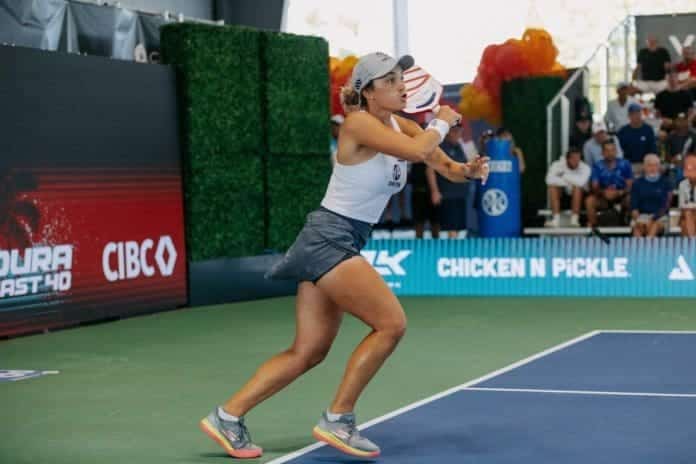Catherine Parenteau’s Pickleball: In the world of pickleball, mastering the transition zone can often be the difference between seizing control of the point or finding yourself on the defensive. Catherine Parenteau, a seasoned pro with Selkirk Sports, shares her insights on how to navigate this critical area of the court when under pressure.
Key Strategies for the Transition Zone
When it comes to the transition zone, Parenteau emphasizes the importance of keeping the ball low and controlled. Ideally, players should aim to keep their opponent’s contact point below their knees, making it harder for them to generate powerful returns.
Low and Controlled Ball Placement: Transitioning effectively requires a low, stable stance. Players should stay low on their feet, with their paddles positioned slightly lower than chest level. This stance resembles that of a baseball catcher, ready to react swiftly to incoming shots.
Stable Stance and Paddle Position: Maintaining a disciplined paddle position is crucial. Players should avoid raising their paddles above their waist or shoulders, as overreaching can lead to errors, especially when reacting to fast-paced shots.
Restraint and Controlled Power: Parenteau stresses the importance of restraint in the transition zone. While it’s natural to want to add power when the ball comes at you hard, less is often more in pickleball. If the ball is bouncing, focus on a clean, controlled return rather than a forceful follow-through.
Varied Practice Routine: To hone these skills, Parenteau suggests a practice routine. Players should mix up the types of shots they receive. Some shots will come directly at them, demanding quick reactions and minimal follow-through. Others will bounce, requiring a bit more finesse in the return.
Adjusting Shot Response: Adjusting to the opponent’s shot strength is key. Less power from them means players need to generate more follow-through to keep the ball in play. Conversely, a hard shot from them necessitates a softer touch to maintain control.
Positioning Behind the Ball: Lastly, staying behind the ball is paramount in defense and transition play. Just like in dinking, players must position themselves to maintain control. Staying behind the ball optimizes the chances of executing a precise and effective return.
Mastering the transition zone is a skill that sets elite pickleball players apart. With Catherine Parenteau’s guidance, players can refine their approach to this pivotal area of the court, enhancing their ability to reset play and advance to the kitchen line with confidence.

News in Brief: Catherine Parenteau’s Pickleball
Mastering the transition zone in pickleball is crucial for control and strategic play, as emphasized by Catherine Parenteau of Selkirk Sports. Keeping the ball low and controlled is paramount, requiring a stable stance with the paddle positioned below chest level. Restraint is key, with players focusing on precise returns rather than overpowering shots. Varied practice routines are recommended to adapt to different shot types, adjusting responses based on opponent strength. Staying behind the ball ensures optimal positioning for effective play, allowing players to navigate the transition zone with finesse and confidence, a hallmark of elite pickleball performance.
Also Read: New Pickleball and Tennis Courts Coming to Columbus Parks

